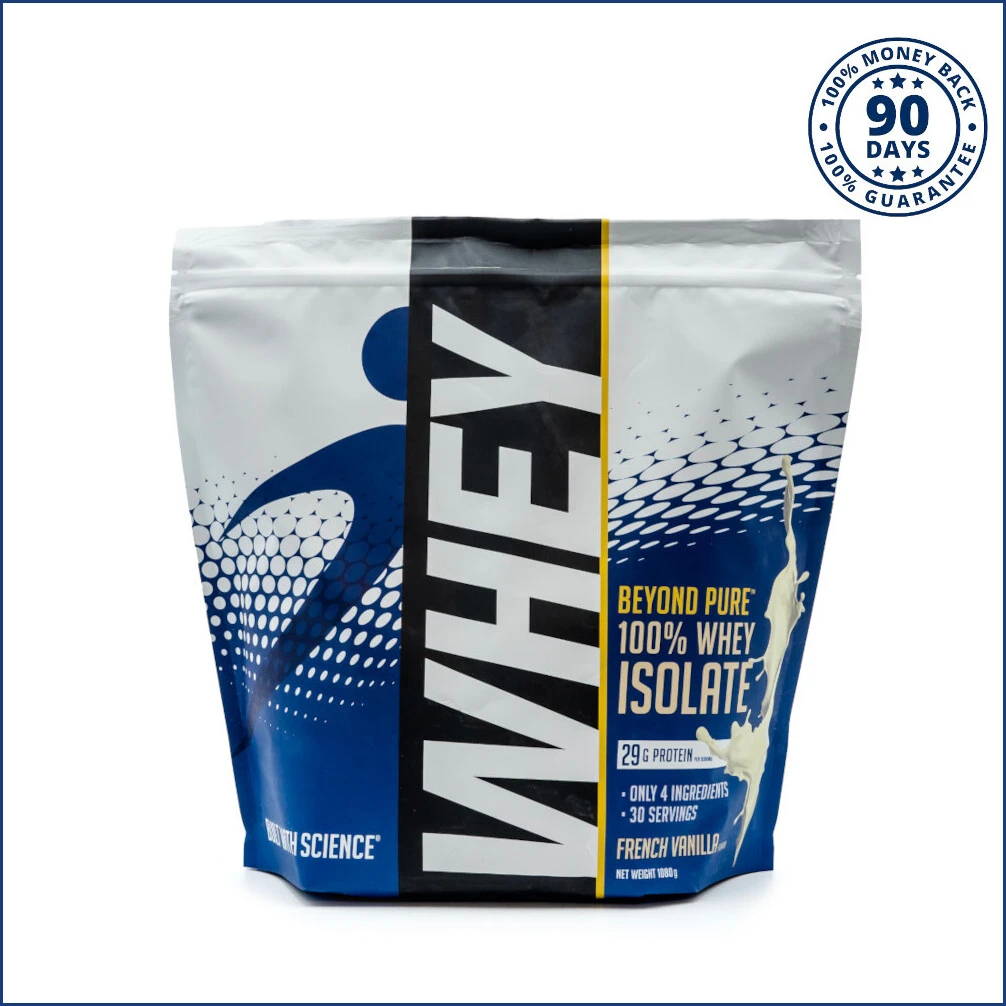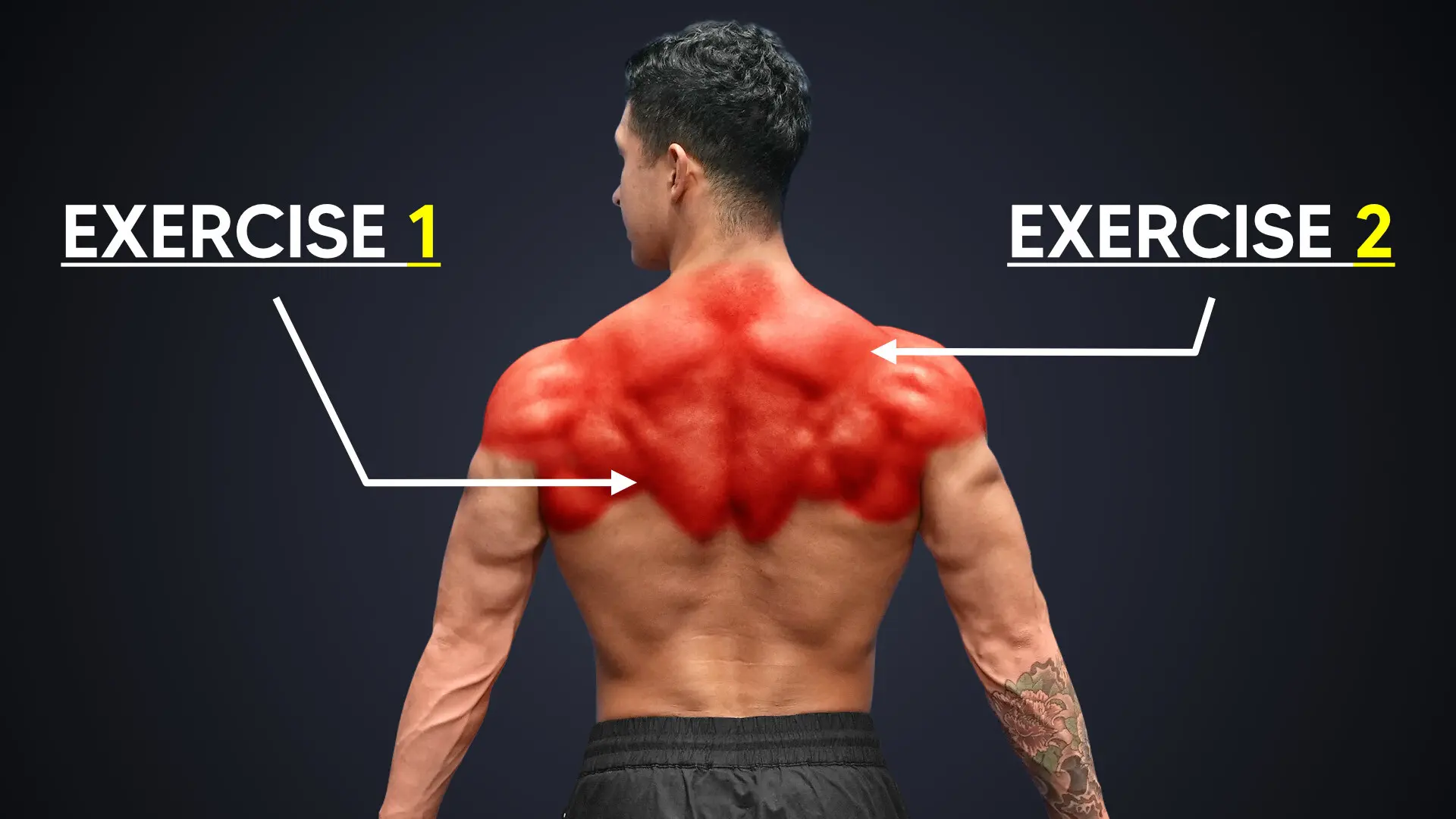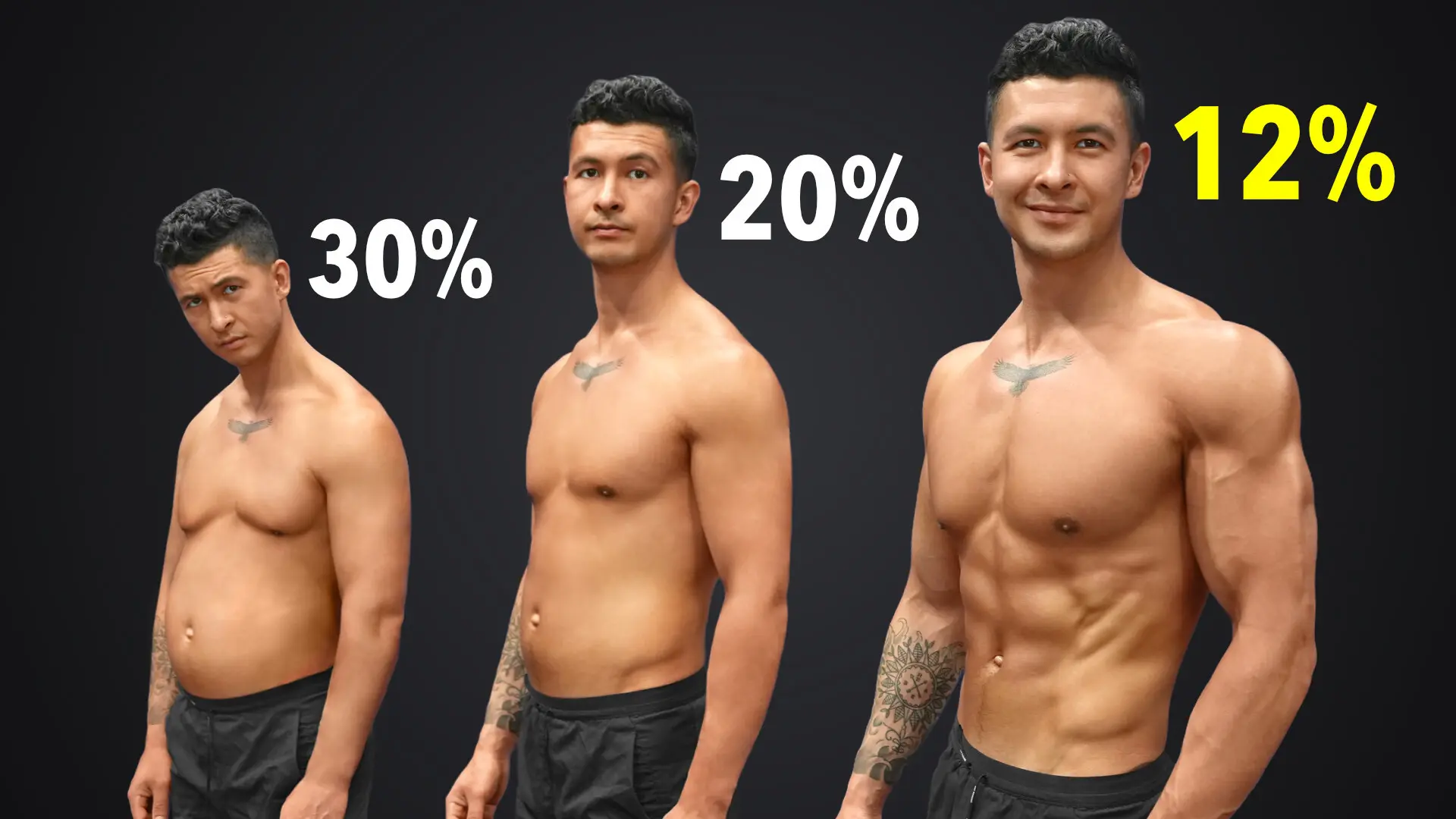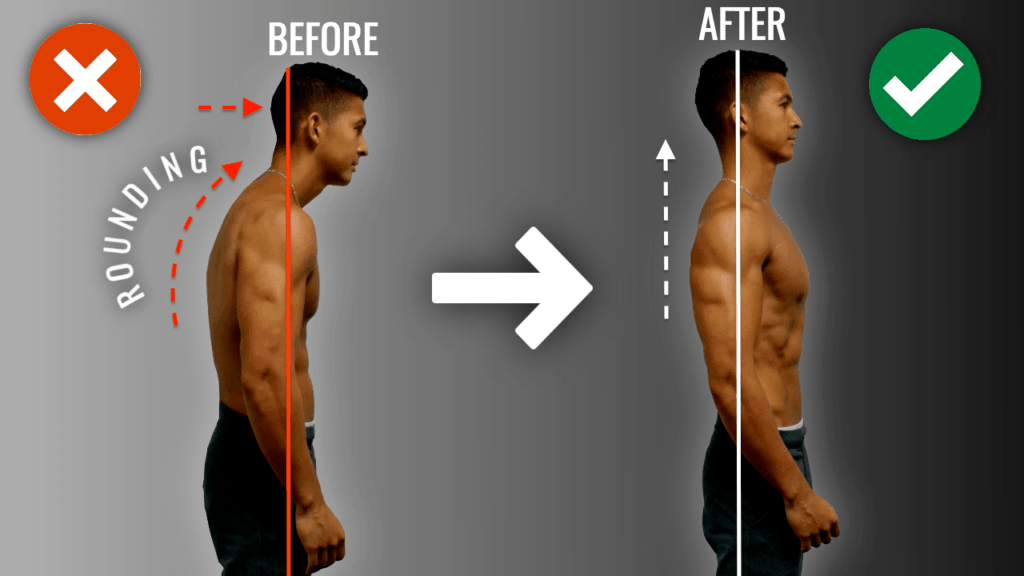
How To Fix Rounded Shoulders In 10 Minutes (Science-Based Routine)
Do you catch yourself hunched over in the mirror and hate the way you look? If you do, give this article a read. In this article, I cover how to fix rounded shoulders (fast!) with a quick, 10-min science-based corrective routine.
Okay, I'll admit this. The forward rounded shoulders posture is the replica of what I looked like when I was a student. This problematic posture develops from sustained periods of slouching and/or the result of an unbalanced training routine and is, sadly, becoming increasingly common.
If you're someone who regularly goes to the gym, you should be worried. A recent 2017 paper found that regular weightlifters exhibit significantly higher values of forward-rounded shoulders in comparison to untrained individuals. And it was all because of the various imbalances created by their training routines.
Looking for a training routine that won't cause all sorts of problematic imbalances? Then you're in the right place. I've designed each and every program available on BWS to help develop your physique in an all-rounded way so you achieve your fitness goals safely - and in the most time-efficient way possible. If you're interested, then:
Click the button below to take my analysis quiz to discover the best program for you:
↓
In addition to being aesthetically unappealing, the hunchback posture can also negatively impact your ability to perform specific exercises in the gym. Which, therefore, means that you'll face a higher risk of developing shoulder pain and injuries.
But before we deep-dive into how to fix rounded shoulders, we need to first take a look at the specific muscle imbalances responsible for this bad posture.
What causes rounded shoulders?
Based on the analysis of multiple papers, we can confidently conclude that two primary things lead to the hunchback posture:
- Overactive muscles that have become tight and are pulling the shoulders into the forward position. The main culprits for this are often the pecs and the upper traps, in combination with a general lack of thoracic mobility.
- Underactive muscles that have become weak and are failing to pull the shoulders back into a neutral position. The main culprits for this are typically the traps (mid and lower) and the serratus anterior.
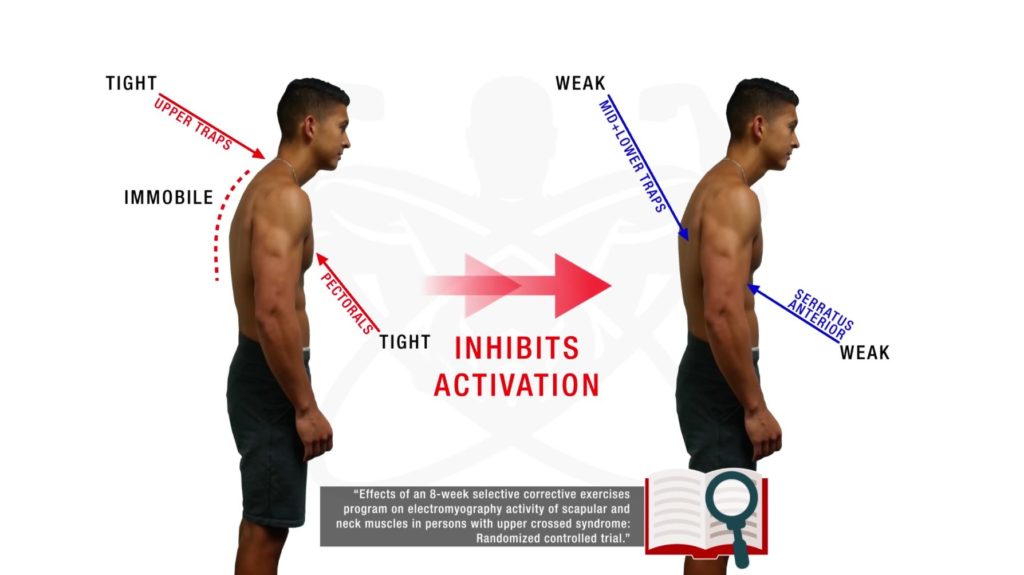
Underactive muscles may not always have been weak. Research shows that underactive muscles became so because overactive muscles took over more of their load over time.
How to fix rounded shoulders
Therefore, when it comes to how to fix rounded shoulders, we'll be making use of a two-part routine. As such, the first part involves stretching the overactive muscles. And the second part calls for the turning on and strengthening of the underactive muscles.
Part 1: Stretching of overactive muscles
In this part, we'll be making use of two primary exercises for rounded shoulders.
1) Thoracic extensions
The first exercise to improve hunchback posture is thoracic extensions. Studies have shown that this particular exercise is an effective drill to improve thoracic mobility. And this improvement, therefore, opens up and corrects the restricted area that contributes to your bad posture.
Here's how to correct your posture through thoracic extensions:
- Place the foam roller across your upper to mid-back area with your hands placed behind your back.
- Let your upper back extend over the foam roller as you exhale. Be sure to avoid excessively arching your lower back.
- Hold the position for a few breaths.
- Repeat this exercise a couple more times, moving further down your upper back each time.
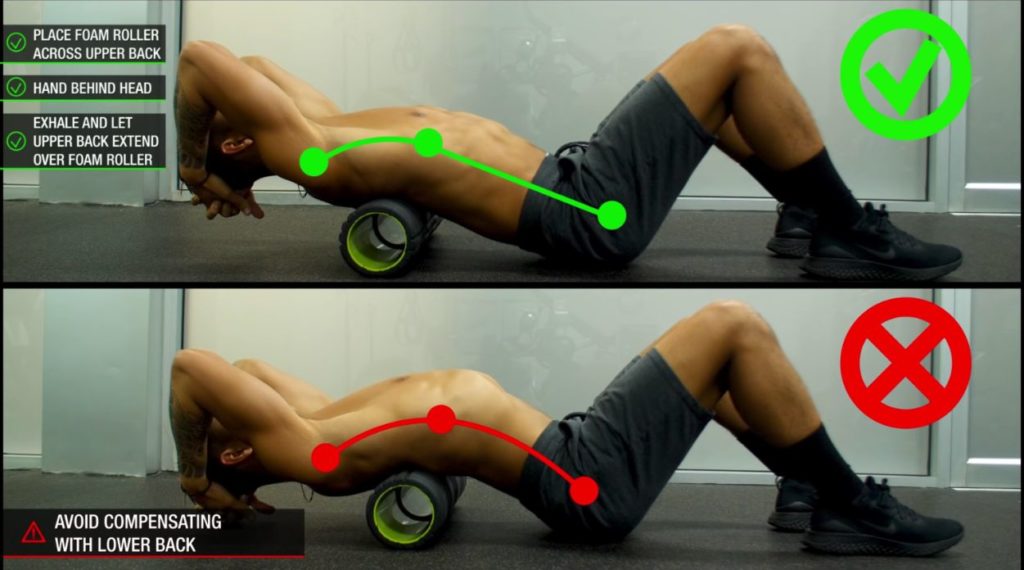
If you don't have a foam roller, here's the link to the one I use and recommend.
But in the meantime, you can perform the movement seated or with your back on a chair as an alternative. Again, focus on extending the upper back. And be sure to avoid excessive arching of your lower back, once again.
2) Band Over-And-Backs
Next, we'll move on to band over-and-backs, one of the best gym exercises to correct rounded shoulders.
How to fix rounded shoulders with the band over-and-backs:
- Grab a band or any stick and hold it straight out in front of your chest with an overhand grip.
- Pull the band apart slightly to create some tension.
- Without bending your elbows, slowly raise the band up over your head and behind your back. Only go as far as you're capable of doing so in a controlled manner.
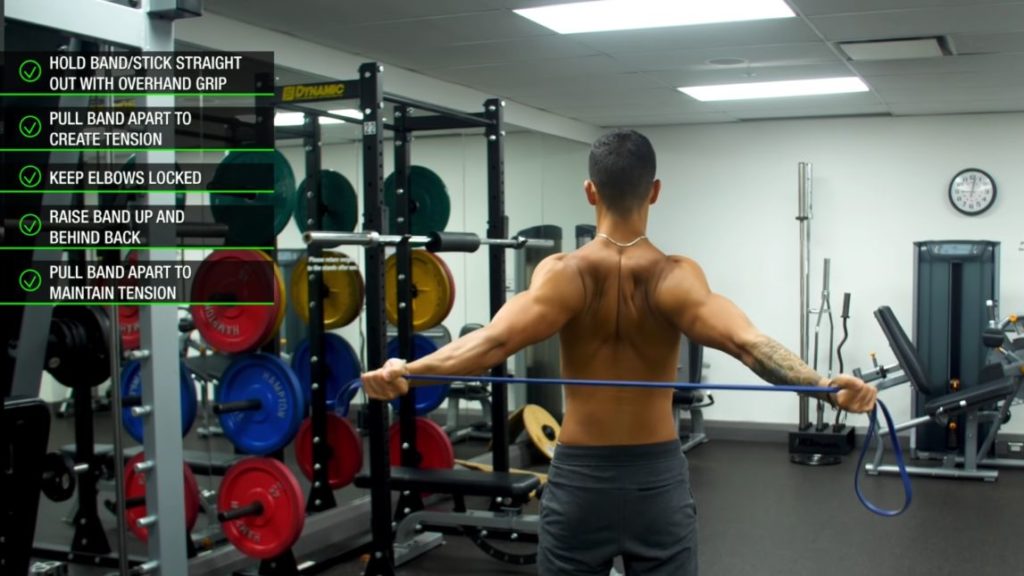
Here are some additional, essential tips to keep in mind:
- When you get behind your back, focus on pulling the band apart. Do not lose all the tension in the band here.
- Try your best to avoid shrugging and tensing the upper traps when performing this movement. Instead, keep your shoulders pulled down and away from your ears.
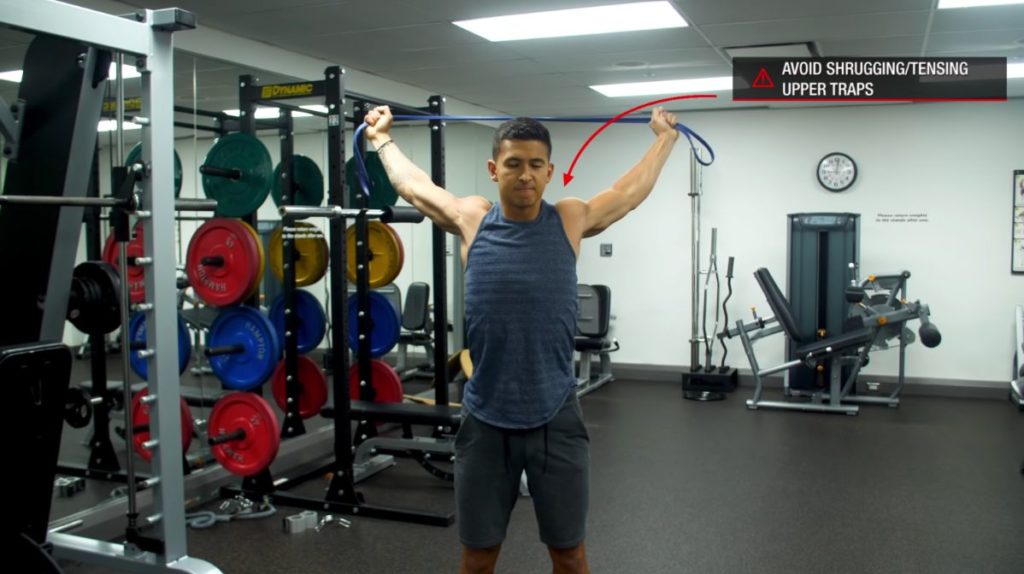
- Start with a wider grip and not coming all the way back at first. You can gradually narrow your grip and going further down your back when your mobility improves.
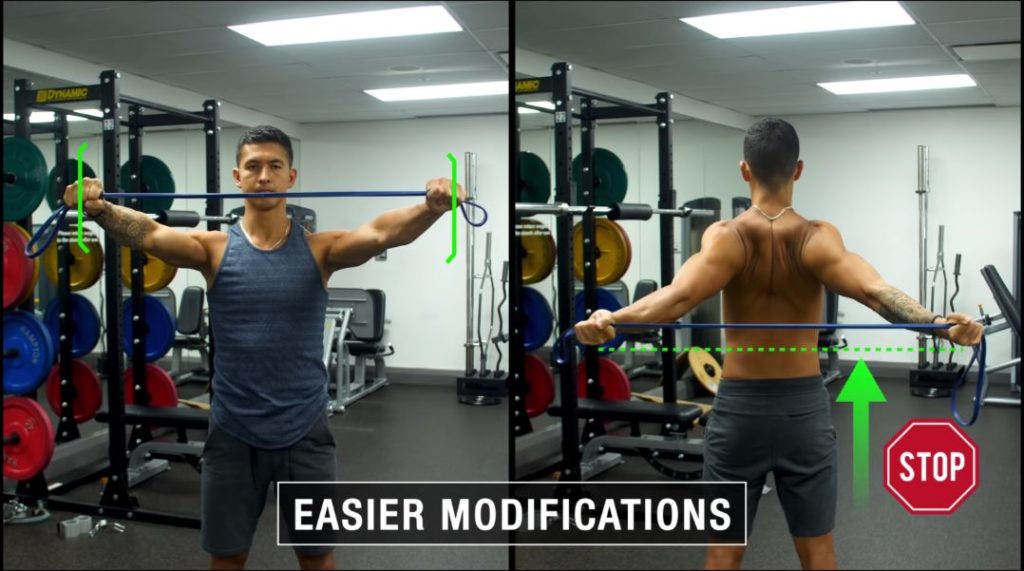
When performing this exercise, you should feel a deep stretch in your pecs, shoulders, and upper traps.
And if you don't have a band, I highly suggest that you get one. Here's the link to the band I use.
Alternative to the band over-and-backs
But in the meantime, the standing chest opener stretch is a decent exercise alternative for correcting bad posture. Here's how to fix rounded shoulders with the standing chest opener stretch:
- Clasp your hands behind your back.
- Squeeze your shoulder blades together.
- Then, pull your arms up to deepen the stretch.
- Hold the back position for about 5 deep breaths at a time.
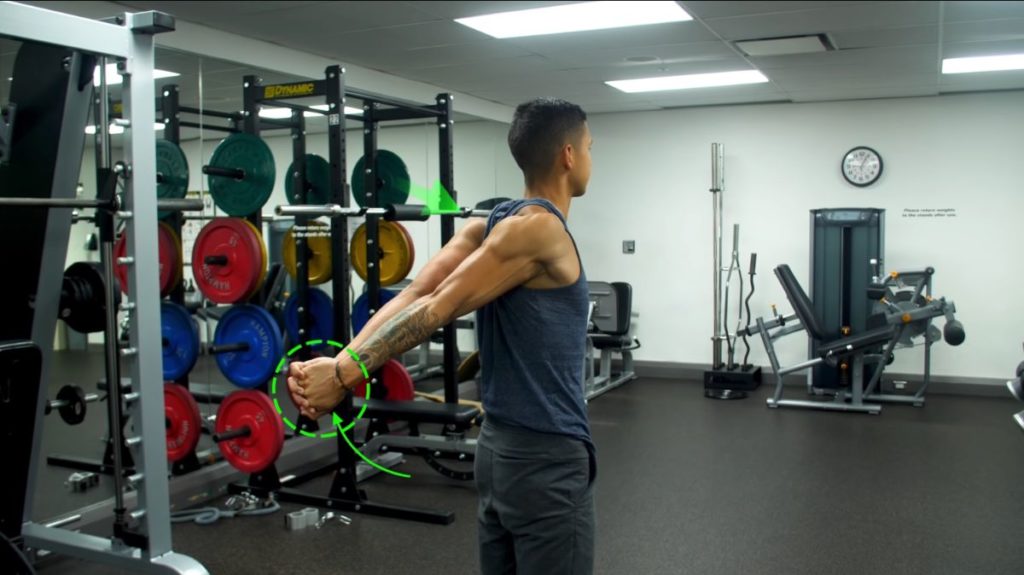
Ultimately, there are always modifications you can make to your exercises to suit your training experience and goals. However, picking the right alternative exercise can be tricky - and this is where our 2-on-1 coaching program comes in. You'll have a dedicated coach assigned to you (plus myself and a dietitian) to guide you every step of the way, so you never have to feel lost about your training. To find out more:
Click the button below to find out more about the 2-on-1 coaching program:
↓
Part 2: Strengthening of underactive muscles
Excellent, we've stretched out the overly tight muscles. It's now time to cover how to correct bad posture by strengthening the three key muscles that have become weak over time and, therefore, failing to pull the shoulders back.
And when it comes to how to fix rounded shoulders, according to case studies, this part provides significantly better corrective results than stretching!
A 2010 clinical trial on 28 individuals struggling with rounded shoulder posture agrees. This study found that the activation and strengthening of the three underactive muscles were vital in the successful decrease in the extent of the hunchback posture.
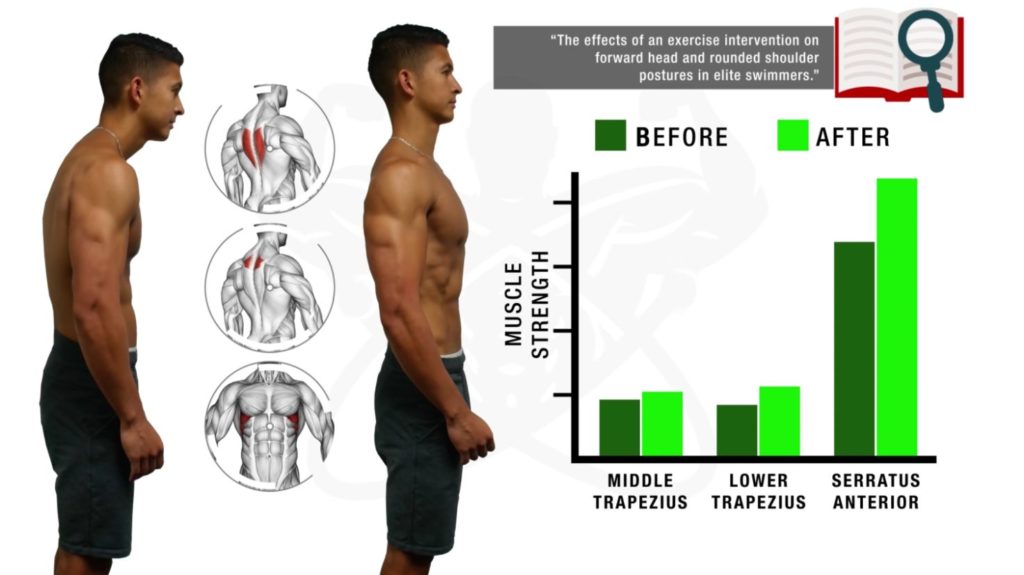
Without further ado, here are additional exercises you can do to fix your posture:
1) Band pull-apart
To start, we'll focus on strengthening the mid traps with the band pull-apart. According to case studies, this particular exercise is incredibly effective in fixing the rounded shoulder posture.
How to fix rounded shoulders with the band pull-apart:
- Hold the band with your thumbs pointing up and arms directly in front of your chest.
- Pull the band apart slowly and with control. You should be twisting your hands such that your thumbs point behind you at the end position simultaneously.
- Squeeze your shoulder blades together as you pull back. This helps engage your mid-traps, which you should feel are working during each rep.
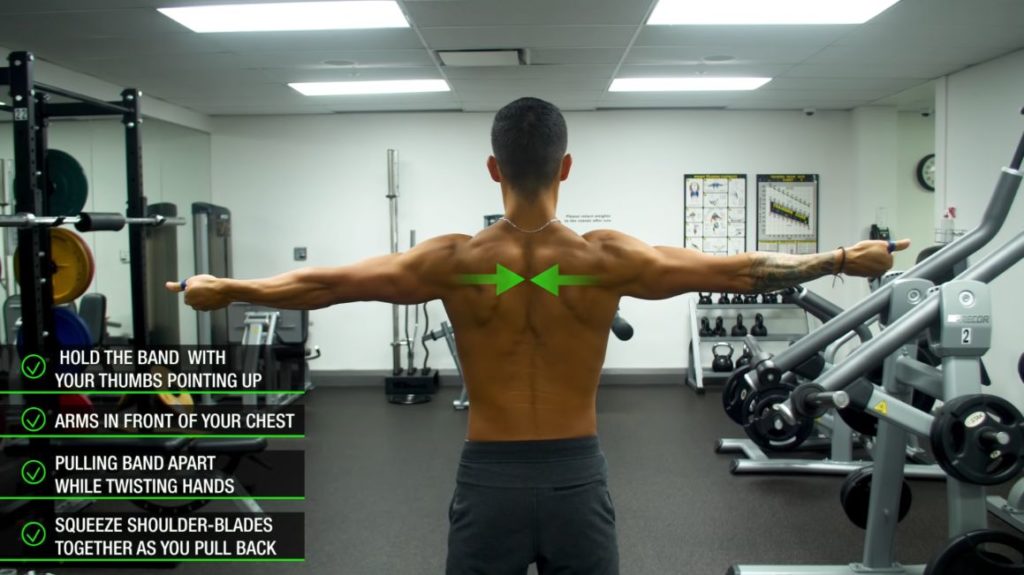
2) Banded Y-raise
After a few sets of the band pull-apart, you'll then want to modify it to hit the lower traps. You can do so by changing the line of pull, effectively altering it to become a Y-raise.
How to fix rounded shoulders with the banded Y-raise:
- Set up as you did with the band pull-apart.
- Push your fists forward slightly to protract your shoulder blades and pull the band apart slightly to create some tension.
- Slowly raise your arms up to make a 'Y' overhead. Try your best to avoid any shrugging or tensing of your upper traps as you do so.
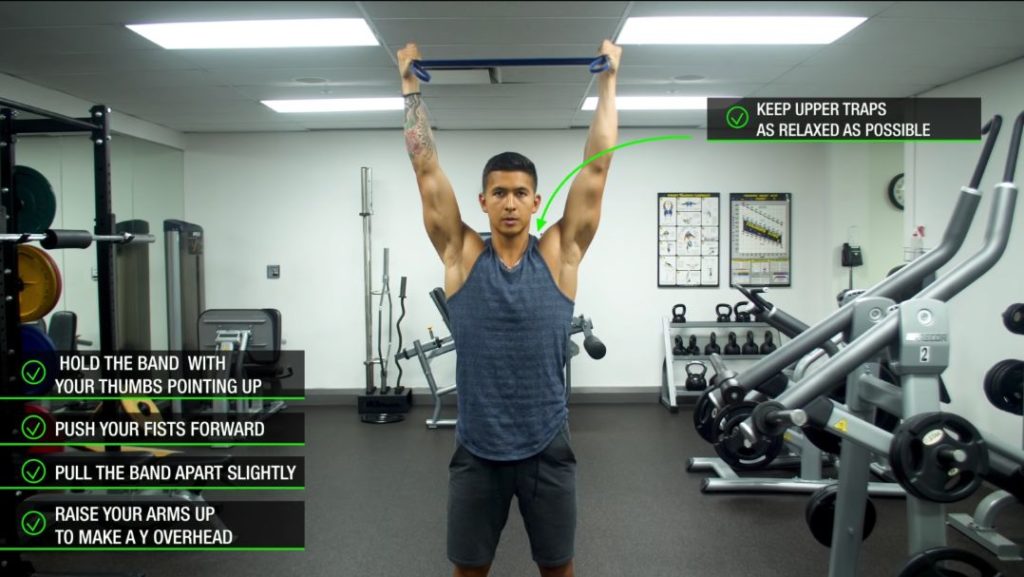
When done properly, you should feel a strong contraction in your lower traps when you raise your arms. But don't worry if you're not feeling too much in that area right now. Your ability to activate the lower traps will improve over time from consistent practice and stretching out of the overactive muscles.
Again, I'd suggest investing in a band for these exercises. But if you don't have one, you can perform the above two banded movements on a bench or stability ball.
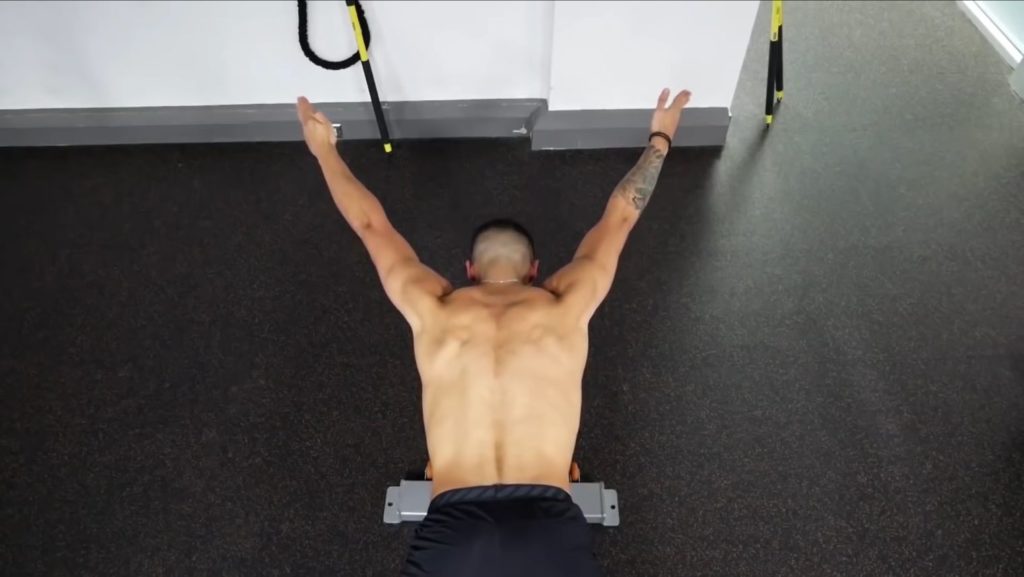
If you're still unsure how that should look like, check out my traps workout video - I cover these exercises in more detail there.
3) Push-up plus
And lastly, we're going to strengthen the serratus anterior by doing something called the push-up plus. Research shows that the push-up plus not only elicits high EMG activity, but it also minimizes the involvement of the overactive upper traps when compared to other exercises.
How to fix rounded shoulders with the push-up plus:
- Get into the end of a push-up position with your arms fully extended.
- Push your hands into the ground to protract your shoulder blades, which will lift your upper back towards the ceiling.
- Hold the top position briefly then come back down to the start position with your shoulder blades now retracted.
- Repeat.
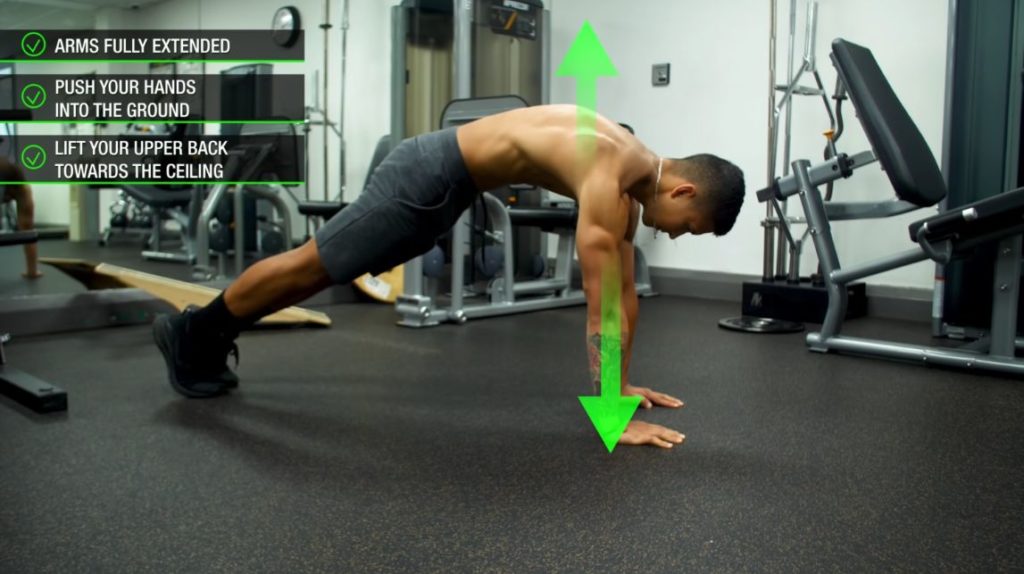
You can also do these on your knees if this is more achievable for you. Take note that it's a very subtle movement; you'll only move a couple of inches up but you should still feel the serratus muscle working.
And to further intensify the contraction, I'd suggest externally rotating your shoulders by twisting your hands outwards before you perform the movement. Two EMG analyses have shown that this modification leads to significantly serratus anterior activation than the standard grip.
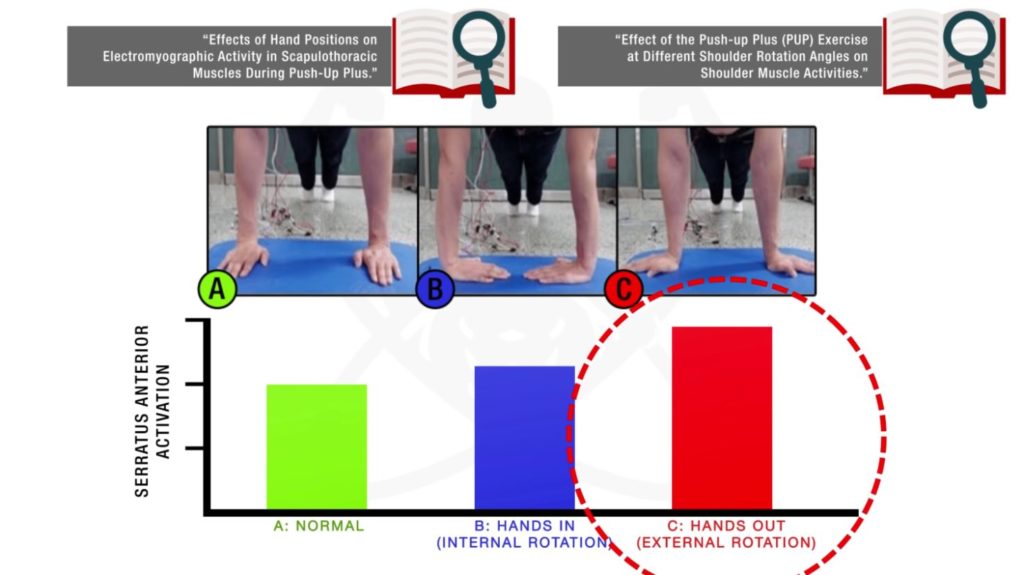
With all these exercises, it's vital that you make each rep count. You'll need to perform each rep slowly, with control, and proper form. This ensures that you're engaging the right muscles that I've covered.
Putting it all together: 10-min corrective routine
So, let's put all we've covered into a corrective routine that will only take 10 minutes to complete.
But with this routine, consistency, and frequency are key if you want to correct your posture as quickly as possible. If you can, try to perform this routine every day. Otherwise, aim for at least 3 - 4 times per week for the best results.
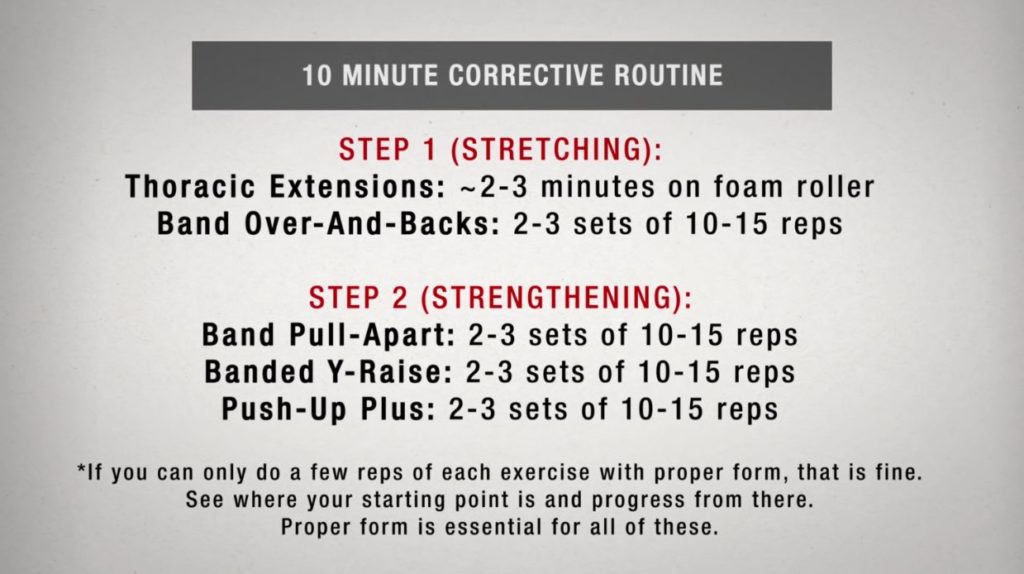
When it comes to how to fix rounded shoulders for the long-term, you need to do two primary things:
- Be aware of how your posture is throughout the day and correct it accordingly.
- Ensure that your training program is structured in a way that prevents these muscle imbalances from occurring in the first place.
And that’s exactly why within my Built With Science programs, I've taken the time to carefully select each and every exercise included in your weekly training routines such that you can build lean muscle while actually improving your posture and correcting your muscle imbalances in the process.
Click the button below to take my analysis quiz to discover the best program for you:
↓
I hope you enjoyed this article and found it useful! Don’t forget to give me a follow and connect with me on Instagram, Facebook, and Youtube as well, in order to stay up to date with my content.
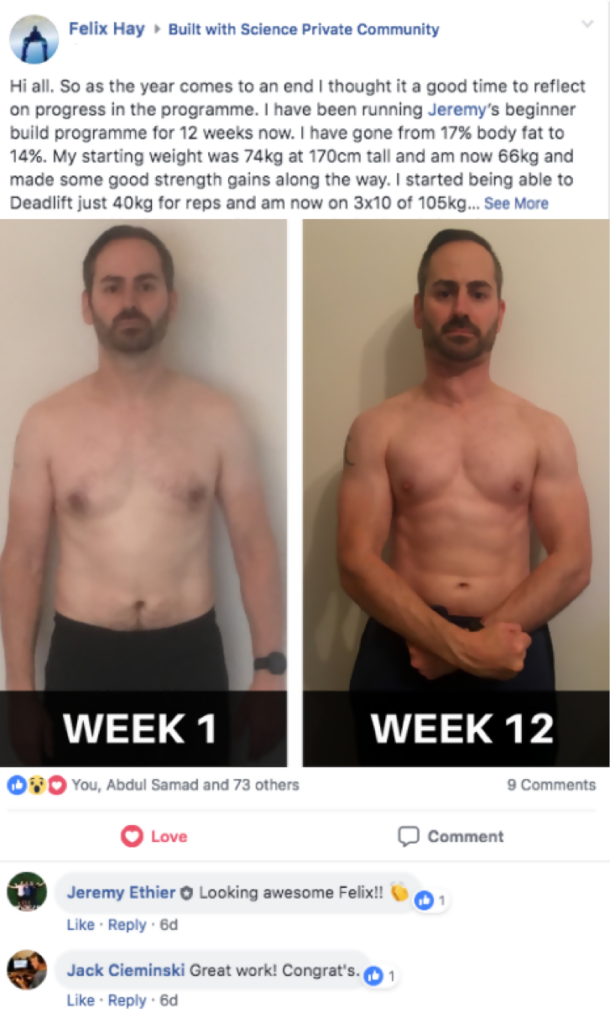
P.S. A quick shoutout to Felix who ran the program for just 12 weeks – as you can see, he managed to improve his posture and muscle imbalances, while completely transforming his physique in the process!

